Mary Will Follow Along with Photos
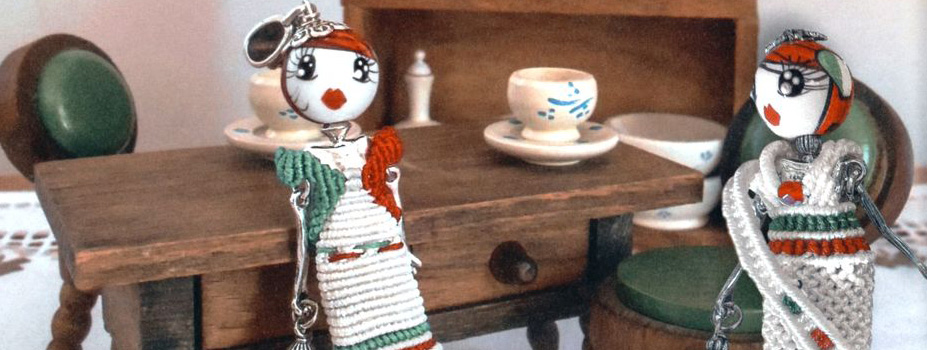
submitted by Mary Wahl I have lived in Canmore, Alberta (about an hour west of Calgary in the Rocky Mountains) for almost five years. Before that, I lived in Toronto and was a devoted member of the Toronto Guild of Stitchery for many years. I remain a member of EAC/ACB. I was one of the lucky ones to receive an issue of Giuliana Ricama magazine. I have been thoroughly enjoying the pictures of beautiful embroideries with photographic instructions in the issue. I have had some difficulty understanding the written instructions. This includes materials lists where I could not translate fabrics and thread requirements to the supplies readily available here. However, I can do a lot with pictures. I love the little Italian dolls. I am a cloth doll maker and may allow them to inspire me in the not too distant future. It was easy for me to relate to the article by Kiyoko Miyagoshi, which featured the chrysanthemum pattern for temari balls. That was the first pattern that I learned how to do with EAC/ACB member Peggy Kimble years ago. Since then, I have made many different patterns, most quite complicated. I have included some in my photograph. I purchased a Japanese book of temari patterns in Matsumoto, Japan, where temari balls are sold in the castle and are featured in the sidewalk grates! I cannot read the book but all I have to do is look at the pictures. I prefer using Styrofoam balls in order to have fairly perfect spheres. The size of the balls does not matter â everything is proportional. I fit them with quilt batting or something soft before winding on the background colour thread. The Japanese like to use all sorts of bits, fabric and otherwise, to form their balls.
Michele Would Choose Casalguidi
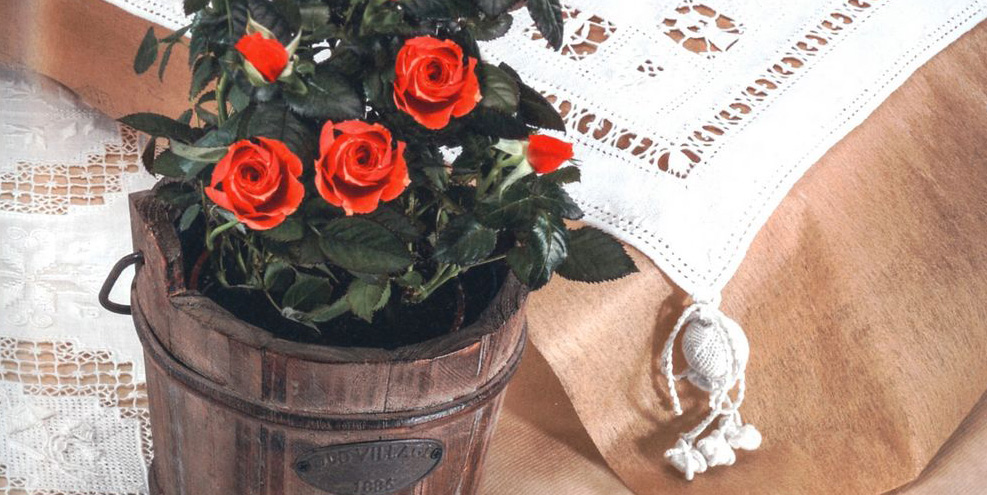
My name is Michele Young and I live in southern Ontario. I was delighted to be a winner of a copy of this high-quality needlework magazine, Giuliana Ricama. The contributorsâ works are displayed in such a way that I immediately want to find a needle and thread and begin working on all of the projects. The pictures are gorgeous and the instructions and traceable designs make this magazine a fantastic resource and a treasure. It was hard to choose a favourite project, but I decided upon the Casalguidi centrepiece with tassels because it contained many traditional, but new to me, stitches I will enjoy learning. The project I am working on in the photo is an Alison Cole goldwork and stumpwork design, both new techniques for me, until I took her class at the EAC/ACB seminar in 2018. I will enjoy sharing this magazine with the members of my guild but will take careful note of who borrows it because I will definitely want it back. Thank you for the prize and for the opportunity to review Giuliana Ricama.
Lexa’s Thoughts on Giuliana Ricama Magazine
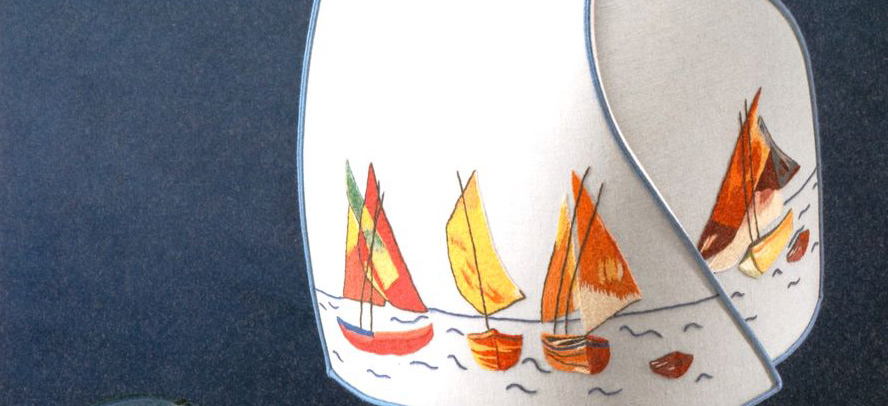
submitted by Lexa Shaw, Embroiderersâ Guild of Victoria I was quite surprised to win a copy of Giuliana Ricama magazine. Another member of my guild was also a winner. She is now looking into the possibility of ordering the magazine as a group rate. I took the issue to my stitch group to show them. I am sitting at the end of the table and the others are some of the group which meets on a weekly basis. This is an interesting magazine. It is organized quite differently from the North American/British ones I am used to. There are multiple examples of how each of the âprojectsâ could be done. The explanations then give a very basic description of the pattern needed. There are also a couple of techniques that are described in detail. The articles are very interesting and informative. There appears to be many more âschoolsâ teaching traditional embroidery than here. Overall, this is a lovely magazine that is aimed at the confident stitcher. The diagrams are clear and easy to follow. My favourite item to stitch would be the Colours of Versilia used in the African women project. This magazine will now be circulated in the guild for other stitchers to peruse.
Under the Old Oak Tree
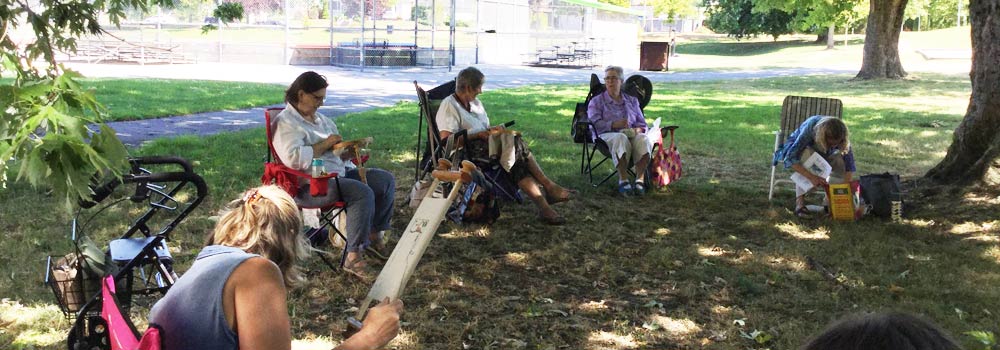
submitted by: Carol Gordon, Membership, Vancouver Guild of Embroiderers Weâre calling our summer stitching group Under the Old Oak Tree. Just thought I would show you what our Vancouver Guild does during a very hot day (every second Tuesday) and safe-distancing during the Corona virus. Bring your lunch, a chair and some stitching. What a way to live in glorious Vancouver (not that weâre bragging or anything). So we now have our meetings figured out until the weather changes. We only wish weâd thought to do this during the summer years ago. And what a great way to encourage stitching and encourage friendship! Find out more about what the Vancouver Guild of Embroiderers is up to on their website.
Adele Tells Us about Giuliana Ricama
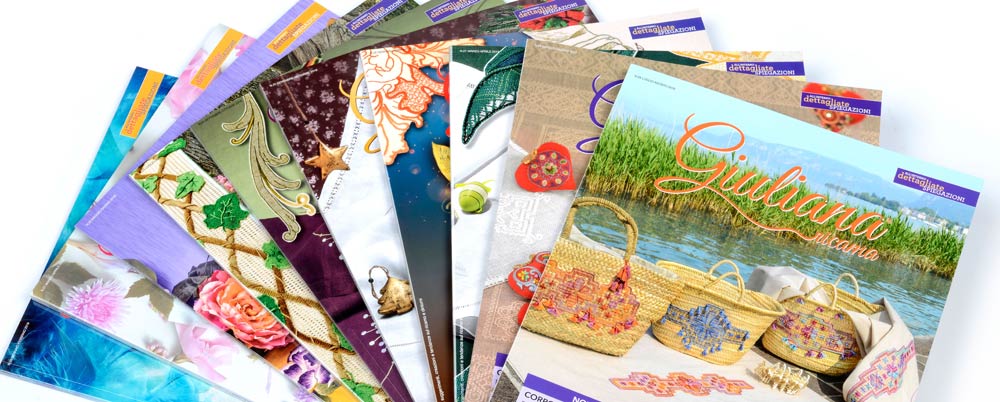
submitted by Adele Mandryk My name is Adele Mandryk and I live in western Canada in the city of Edmonton, Alberta. What a delightful surprise to learn that I had won a copy of Giuliana Ricama. So far, I have read the magazine twice and was thoroughly entertained both times. I particularly enjoyed reading the article on Casalguidi embroidery as I have often wondered what exactly it is that makes this form of whitework, âCasalguidi.â Aside from explaining the history and characteristics of this very old technique, the article illustrated the particular stitches used and then a companion piece showed how various Italian embroidery clubs are modernizing this traditional technique. A bracelet, a purse and a pair of shoes featuring black Casalguidi embellishments on ecru ground fabric were stunning. I was also quite taken by a pair of curtains stitched using coloured threads and the Caterina deâ Medici embroidery technique, a form of counted work on very fine linen fabric that I had not heard of before.  This magazine is translated from Italian to English and poses a bit of a challenge in understanding some embroidery terminology used in project instructions. For instance, in one article, âcordâ was used for the more commonly used word âthreadâ which was a bit confusing until I realized my mental picture was âoff.â However, there was a certain amount of satisfaction in âgooglingâ unfamiliar stitch names and finding, in one case, that it was merely the buttonhole stitch âdressed upâ as the festoon stitch. I very much enjoyed the gentle mental exercise required and the excellent close-up photography helped. This magazine is more than just a project magazine. It offers historical context and insight into modern-day Italian embroiderers. In the photo, I am holding my first attempt at counted needlepoint embellished with silk ribbon embroidery. The project, called âFuchsias and Champagne,â was designed and taught by Merrilyn Heazlewood through the Embroiderersâ Association of Canada/Association Canadienne de Broderie. I plan to finish it as a bell pull and gift it to my Mother on her birthday. Thank you to EAC/ACB and the publishers of Giuliana Ricama for the opportunity to add a beautiful embroidery magazine to my library that I know I will come back to many times.
Meeting During Covid-19

Semiahmoo Guild of Needle Arts met regularly on the 1st and 3rd Monday of each month at the White Rock Public Library. When the library closed due to Covid-19, we felt a loss in our lives that was quite profound. Our last get- together was February 17, 2020. We met once after that at one of the membersâ homes before the full lockdown came into effect. We kept in touch with occasional emails; however, it wasnât until two of the members started to meet for coffee, and the restrictions were loosening, that we realized we could actually meet as a group, with proper social distancing. A local park had lots of flat, open space and trees for shade. It seemed like a perfect solution to our dilemma. A sunny day was chosen, a time set, a âwhat to bringâ list sent and then it all fell into place. Eight of us showed up and we had a lovely time! Many brought stitching to work on, and while not a lot of that was done, works in progress were shared for everyone to see. For the most part, our morning was used to catch up with each other. Talk abounded about what we were doing with our time, books read, TV shows watched, cooking and baking accomplishments shared. We watched a group doing a Tai Chi class nearby. There was some talk about politics of course, but mostly we talked about our lives. We have scheduled another park get together, and this time some stitching may actually take place. It is a way of convening that felt safe for everyone involved. It was a wonderful way to stay connected with people who love stitching but donât always schedule time in their days to do it. This kind of meeting gave us the social connections that we were missing, as well as time to create.
Issue 33 of Giuliana Ricama

submitted by Joyce Gill I was really pleased when I heard that Giuliana Ricama was going to be produced in English. I have several past issues in Italian that I love to browse. The projects are inspirational, and I feel that I could accomplish some of them using the diagrams, even though I do not know the language. Issue 33 in English does not disappoint. The millefiori flowers are exquisite. The Springtime Easter Eggs are really lovely. The Reticella project opens up new worlds to me. So far, Iâve only browsed and dreamed, but I know that one of these three will be on my to-do list very soon. Italy is halfway around the world from my home in Atlantic Canada, but the magazine is a doorway to the artistry of a new fellowship of needleworkers.

